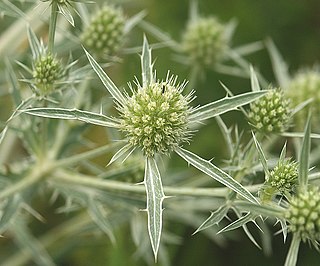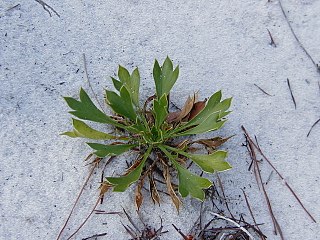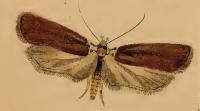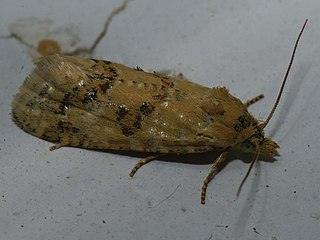
Eryngium alpinum is a perennial herb in the family Apiaceae.

Hinton Charterhouse Field is a 0.32 hectare biological Site of Special Scientific Interest (SSSI) near the village of Hinton Charterhouse in Bath and North East Somerset, notified in 1991.

Eryngium campestre, known as field eryngo, is a species of Eryngium, which is used medicinally. A member of the Apiaceae family, Eryngo is a hairless, thorny perennial. The leaves are tough and stiff, whitish-green. The basal leaves are long-stalked, pinnate and spiny.
The leaves of this plant are mined by the gall fly which is called Euleia heraclei.

Eryngium aristulatum, known by the common names California eryngo and Jepson's button celery, is a species of flowering plant in the carrot family.

Eryngium armatum, known by the common names coastal eryngo and prickly coyote thistle, is a species of flowering plant in the carrot family.
Eryngium constancei is a species of flowering plant in the carrot family known by the common name Loch Lomond button celery, or Loch Lomond coyote thistle. It is endemic to California, where it is known from only three occurrences north of the San Francisco Bay Area. One of the populations is at the Loch Lomond Vernal Pool Ecological Reserve at Loch Lomond in Lake County. The plant appears mainly in vernal pools. It is endangered on the state and federal levels.

The Loch Lomond Vernal Pool Ecological Reserve is a nature reserve of 8.22 acres (33,300 m2) in the community of Loch Lomond in Lake County, California. It is one of 119 ecological reserves managed by the California Department of Fish and Game (CDFG). The ecological reserve system was authorized by the state legislature in 1968 for the purpose of conservation and protection of rare plants, animals and habitats.
Eryngium pinnatisectum is an uncommon species of flowering plant in the carrot family, known by the common names Tuolumne eryngo and Tuolumne button celery.
Eryngium racemosum is a rare species of flowering plant in the carrot family known by the common name delta eryngo, or delta button celery.
Eryngium spinosepalum, known by the common names spinysepal eryngo and spiny-sepaled button celery, is an uncommon species of flowering plant in the carrot family.

Eryngium foetidum is a tropical perennial herb in the family Apiaceae. Common names include culantro, shadow beni, Mexican coriander, bhandhania, long coriander, and ngo gai. It is native to Mexico, Central America, and South America, but is cultivated worldwide, sometimes being grown as an annual in temperate climates.

Eryngium cuneifolium is a rare species of flowering plant in the carrot family known by the common names wedgeleaf eryngo, wedge-leaved button-snakeroot, and simply snakeroot. It is endemic to the state of Florida in the United States where it is known only from Highlands County. It is one of many rare species that can be found only on the Lake Wales Ridge, an area of high endemism. It was federally listed as an endangered species of the United States in 1987.

Eryngium planum, known as or blue eryngo, or flat sea holly, is a species of flowering plant in the family Apiaceae, native to the area that includes central and southeastern Europe and central Asia. It is an herbaceous perennial thistle growing to 50 cm (20 in) with branched silvery-blue stems, and numerous small blue conical flowerheads surrounded by spiky bracts in summer.

Agonopterix cnicella is a moth of the Depressariidae family. It is found in most of Europe, except Ireland, Fennoscandia, Portugal, the central part of the Balkan Peninsula, Latvia and Estonia. It has also been recorded from Morocco and Asia Minor.

Zygaena sarpedon is a moth of the Zygaenidae family. It is found in France, Italy and on the Iberian Peninsula.

Eryngium aquaticum is a species of flowering plant in the carrot family known by the common name rattlesnakemaster, marsh rattlesnake master, corn-snakeroot, bitter snakeroot, and marsh eryngo. This plant is native to eastern North America.

Aethes williana, the silver carrot conch, is a species of moth of the family Tortricidae. It was described by Brahm in 1791. It is found in most of Europe, Trans-Caspia, Asia Minor, Mongolia, north-western Africa and Iran. It is found in dry, sandy and chalky habitats.














